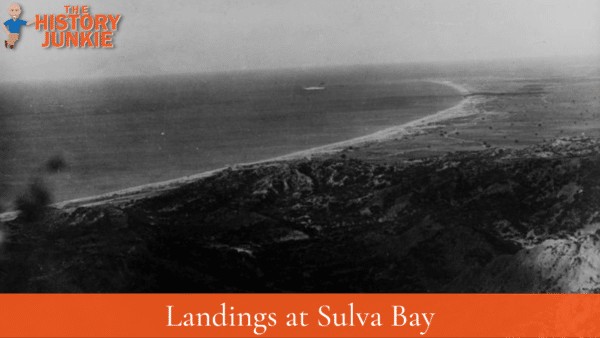The landings at Suvla Bay were part of the August Offensive, a series of Allied attacks on the Gallipoli Peninsula in August 1915 during World War 1. The landings were intended to support a breakout from the ANZAC sector five miles to the south.

Although initially successful, against only light opposition, the landing was mismanaged from the outset and quickly reached the same stalemate conditions that prevailed on the Anzac and Helles fronts.
Jump to:
The Battle
The landings at Suvla Bay were carried out by the British 10th and 11th divisions under the command of Lieutenant General Sir Frederick Stopford.
The landings were scheduled to begin at 10:00 p.m. on August 6, 1915, but were delayed by several hours due to poor weather conditions. As a result, the Turks had time to reinforce the area and prepare for the attack.
When the landings finally did begin, the British troops met with little resistance and quickly secured the beaches.
However, Stopford's orders were vague, and he failed to take advantage of the initial success of the landings.
As a result, the British troops were unable to break out of the beachhead, and the offensive quickly bogged down.
The failure of the attack was a major setback for the Allies. It led to the failure of the Battle of the Nek and the eventual removal of the Allies from the Gallipoli Peninsula.
Aftermath
The Allies suffered heavy casualties at Suvla Bay and Anzac Cove. They lost approximately 18,000 soldiers, while the Turks lost between 18,000 and 20,000. The fighting soon settled into a stalemate, and Stopford was relieved of his command and replaced by Henry de Beauvoir de Lisle.
Western Front commanders were eventually sent to Suvla to provide experience, but it was too late to save the Allied position.
